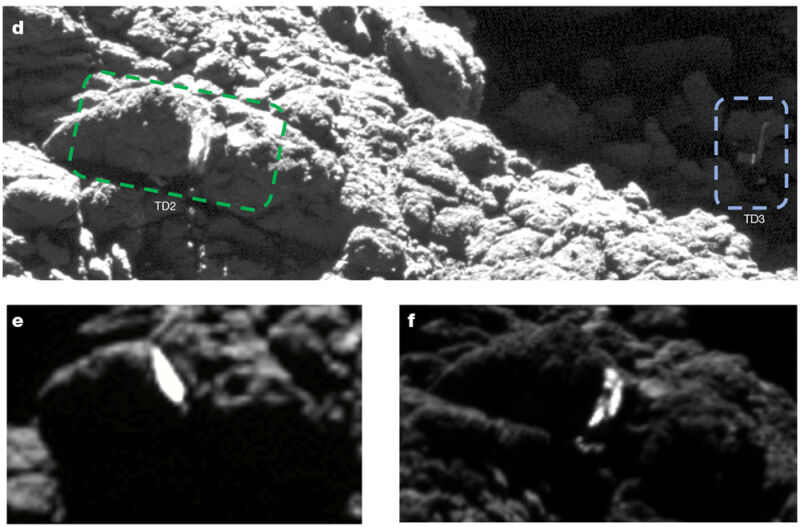
Enlarge / The close-ups highlight the bright ice exposed in the boulders when Philae struck them during its second touchdown (green box above). (credit: O'Rourke et al./Nature)
The Rosetta mission’s attempt to drop the Philae lander on a comet in 2014 didn’t go according to plan. The harpoon mechanism meant to stick Philae to terra-not-quite-firma didn’t work, and poor Philae ended up bouncing around and landing under a dark cliff overhang, unable to deploy its solar panels and complete its tasks. But let it not be said that Philae failed to leave its mark. Because it did. Quite literally.
To extract value from Philae’s accidental adventure, researchers have worked hard to identify the spots where the craft impacted the surface of the comet. This required painstaking analysis of Philae’s motion sensors to reconstruct its trajectory, along with a terrifically complex game of “one of these things is not like the others” played with before-and-after images of the comet’s jumbled surface.
The site of the initial bounce was easy enough to find, but the path from there to its resting place was another story. A new study led by the European Space Agency’s Laurence O’Rourke reveals another spot where Philae dented comet 67P. And the size of that dent actually tells us something remarkable about what comets are like.
No comments:
Post a Comment